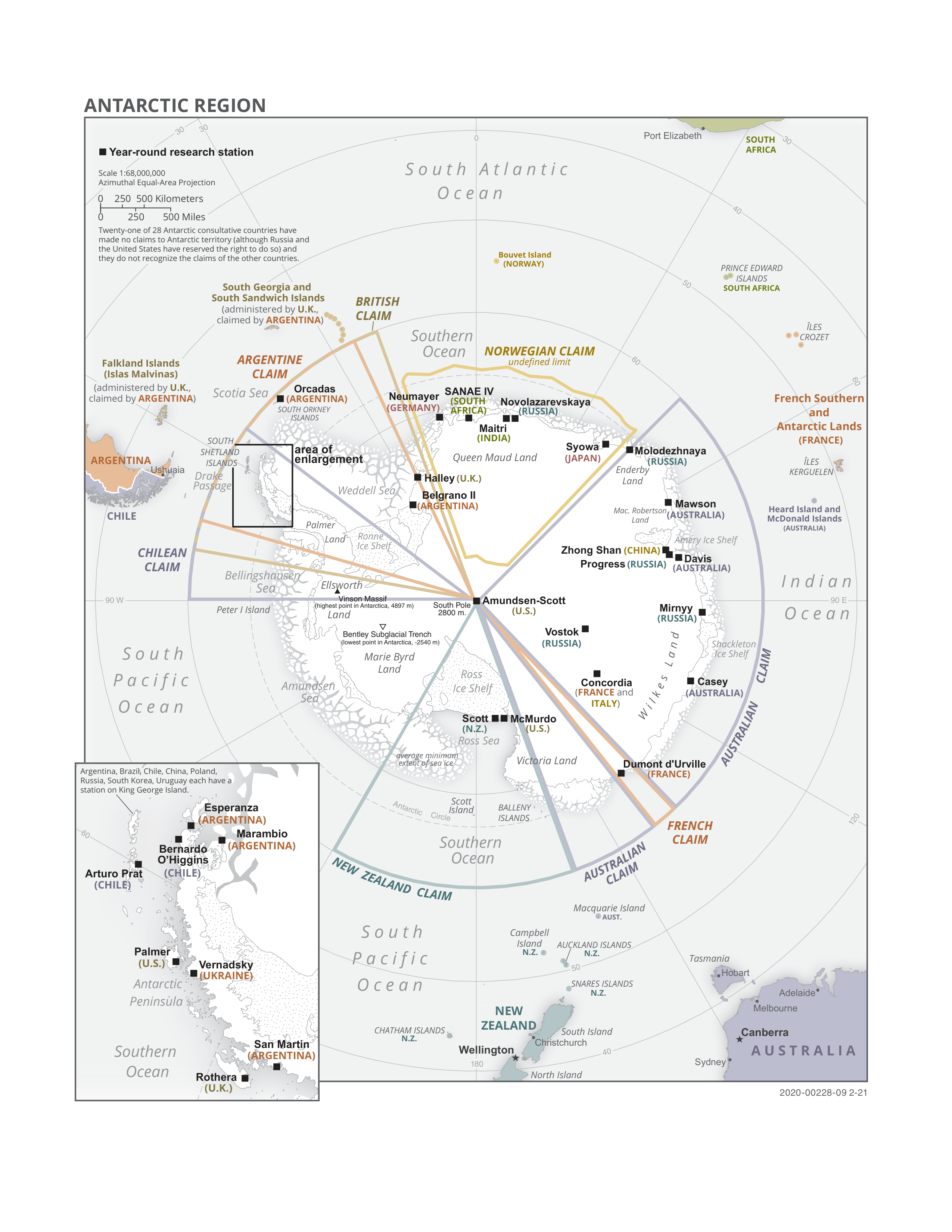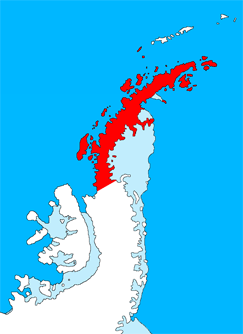|
Duchaylard Island
Duchaylard Island is an island long at the west side of Grandidier Channel, lying southeast of Vieugue Island and west of Cape Garcia, off the west coast of Graham Land. It was discovered by the French Antarctic Expedition, 1903–05, and named by Jean-Baptiste Charcot for Monsieur du Chaylard, French Minister Plenipotentiary at Montevideo, Uruguay. The recommended spelling follows the form used in Maurice Bongrain's report of 1914 and is now firmly established. See also * List of Antarctic and sub-Antarctic islands This is a list of Antarctic and sub-Antarctic islands. * Antarctic islands are, in the strict sense, the islands around mainland Antarctica, situated on the Antarctic Plate, and south of the Antarctic Convergence. According to the terms of the ... References Islands of Graham Land Graham Coast {{GrahamCoast-geo-stub ... [...More Info...] [...Related Items...] OR: [Wikipedia] [Google] [Baidu] |
Antarctica
Antarctica () is Earth's southernmost and least-populated continent. Situated almost entirely south of the Antarctic Circle and surrounded by the Southern Ocean (also known as the Antarctic Ocean), it contains the geographic South Pole. Antarctica is the fifth-largest continent, being about 40% larger than Europe, and has an area of . Most of Antarctica is covered by the Antarctic ice sheet, with an average thickness of . Antarctica is, on average, the coldest, driest, and windiest of the continents, and it has the highest average elevation. It is mainly a polar desert, with annual Climate of Antarctica#Precipitation, precipitation of over along the coast and far less inland. About 70% of the world's freshwater reserves are frozen in Antarctica, which, if melted, would raise global sea levels by almost . Antarctica holds the record for the Lowest temperature recorded on Earth, lowest measured temperature on Earth, . The coastal regions can reach temperatures over in the ... [...More Info...] [...Related Items...] OR: [Wikipedia] [Google] [Baidu] |
Antarctic Treaty System
The Antarctic Treaty and related agreements, collectively known as the Antarctic Treaty System (ATS), regulate international relations with respect to Antarctica, Earth's only continent without a native human population. It was the first arms control agreement established during the Cold War, designating the continent as a scientific preserve, establishing freedom of scientific investigation, and banning Military activity in the Antarctic, military activity; for the purposes of the treaty system, Antarctica is defined as all the land and ice shelf, ice shelves south of 60th parallel south, 60°S latitude. Since September 2004, the Antarctic Treaty Secretariat, which implements the treaty system, is headquartered in Buenos Aires, Argentina. The main treaty was opened for signature on 1 December 1959, and officially coming into force, entered into force on 23 June 1961. The original signatories were the 12 countries active in Antarctica during the International Geophysical Year ... [...More Info...] [...Related Items...] OR: [Wikipedia] [Google] [Baidu] |
Grandidier Channel
Grandidier Channel () is a navigable channel between the west coast of Graham Land, Antarctica, and the north end of the Biscoe Islands, extending from Penola Strait southwestward to the vicinity of Larrouy Island. It was first charted by the French Antarctic Expedition, 1903–05, and named by Jean-Baptiste Charcot for Alfred Grandidier Alfred Grandidier (20 December 1836 – 13 September 1921) was a French natural history, naturalist and List of explorers, explorer. From a very wealthy family, at the age of 20, he and his brother, Ernest Grandidier (1833–1912), undertook a ..., President of the Paris Geographical Society. Charcot applied the name to the entire body of water between the mainland and the Biscoe Islands but the name has since been restricted to the navigable portion described. File:GrandidierChannel01.JPG, Cruising Grandidier Channel in January 2014 File:GrandidierChannel05.JPG, Iceberg in Grandidier Channel File:GrandidierChannel07.JPG, Grandidier Chan ... [...More Info...] [...Related Items...] OR: [Wikipedia] [Google] [Baidu] |
Cape Garcia
Cape Garcia () is a cape at the north side of the entrance to Barilari Bay, forming the north extremity of Felipe Solo (Obligado) Peninsula on the west coast of Graham Land, Antarctica. The cape was discovered and named "Cap Loqui" by the French Antarctic Expedition, 1903–05, under Jean-Baptiste Charcot. At the same time Charcot named the south entrance point to the bay "Cap Garcia," after Rear Admiral Garcia of the Argentine Navy. The maps of Charcot's French Antarctic Expedition, 1908–10 The French Antarctic Expedition is any of several France, French expeditions in Antarctica. 1837–1840 In 1837, during an 1837–1840 Jules Dumont d'Urville#Second voyage of Astrolabe, expedition across the deep southern hemisphere, Captain ..., showed "Cap Garcia" as the north cape of Barilari Bay and the name has since become established for this feature. Charcot did not use the name "Cap Loqui" on the maps of his second expedition but, for the sake of historical continuity, the nam ... [...More Info...] [...Related Items...] OR: [Wikipedia] [Google] [Baidu] |
Graham Land
Graham Land is the portion of the Antarctic Peninsula that lies north of a line joining Cape Jeremy and Cape Agassiz. This description of Graham Land is consistent with the 1964 agreement between the British Antarctic Place-names Committee and the US Advisory Committee on Antarctic Names, in which the name "Antarctic Peninsula" was approved for the major peninsula of Antarctica, and the names Graham Land and Palmer Land for the northern and southern portions, respectively. The line dividing them is roughly 69 degrees south. Graham Land is named after Sir James R. G. Graham, First Lord of the Admiralty at the time of John Biscoe's exploration of the west side of Graham Land in 1832. It is claimed by Argentina (as part of Argentine Antarctica), Britain (as part of the British Antarctic Territory) and Chile (as part of the Chilean Antarctic Territory). Graham Land is the closest part of Antarctica to South America. Thus it is the usual destination for small ships takin ... [...More Info...] [...Related Items...] OR: [Wikipedia] [Google] [Baidu] |
French Antarctic Expedition, 1903–05
The French Antarctic Expedition is any of several French expeditions in Antarctica. 1837–1840 In 1837, during an 1837–1840 expedition across the deep southern hemisphere, Captain Jules Dumont d'Urville sailed his ship ''Astrolabe'' along a coastal area of Antarctica which he later named Adélie Land, in honor of his wife. During the Antarctic part of this expedition, Dumont d'Urville team performed the first experiments to determine the approximate position of the South magnetic pole, and landed on Débarquement Rock in the Géologie Archipelago, () just 4 km from the mainland, where he took mineral and animal samples. On his return to France in 1840 he was made rear admiral. 1904–1907 Jean-Baptiste Charcot was appointed leader of a 1904–1907 French Antarctic Expedition, aboard the ship ''Français'', exploring the west coast of Graham Land portion of the Antarctic Peninsula. The expedition reached Adelaide Island in 1905 and took pictures of the Palmer ... [...More Info...] [...Related Items...] OR: [Wikipedia] [Google] [Baidu] |
Jean-Baptiste Charcot
Jean-Baptiste Étienne Auguste Charcot, better known in France as Commandant Charcot, (15 July 1867 in Neuilly-sur-Seine near Paris – 16 September 1936 at sea (30 miles north-west of Reykjavik, Iceland), was a French scientist, medical doctor and polar scientist. His father was the neurologist Jean-Martin Charcot (1825–1893). As a sportsman, he was French rugby XV champion in 1896 and also won a double silver medal in sailing at the 1900 Summer Olympics. Life Jean-Baptiste Charcot was appointed leader of the French Antarctic Expedition with the ship ''Français'' exploring the west coast of Graham Land from 1904 until 1907. The expedition reached Adelaide Island in 1905 and took pictures of the Palmer Archipelago and Loubet Coast. From 1908 until 1910, another expedition followed with the ship '' Pourquoi Pas ?'', exploring the Bellingshausen Sea and the Amundsen Sea and discovering Loubet Land, Marguerite Bay, Mount Boland and Charcot Island, which was named after his ... [...More Info...] [...Related Items...] OR: [Wikipedia] [Google] [Baidu] |
Minister Plenipotentiary
An envoy extraordinary and minister plenipotentiary, usually known as a minister, was a diplomatic head of mission who was ranked below ambassador. A diplomatic mission headed by an envoy was known as a legation rather than an embassy. Under the system of diplomatic ranks established by the Congress of Vienna (1815), an envoy was a diplomat of the second class who had plenipotentiary powers, i.e., full authority to represent the government. However, envoys did not serve as the personal representative of their country's head of state. Until the first decades of the 20th century, most diplomatic missions were legations headed by diplomats of the envoy rank. Ambassadors were only exchanged between great powers, close allies, and related monarchies. After World War II it was no longer considered acceptable to treat some nations as inferior to others, given the United Nations doctrine of equality of sovereign states. The rank of envoy gradually became obsolete as countries upgraded t ... [...More Info...] [...Related Items...] OR: [Wikipedia] [Google] [Baidu] |
Montevideo, Uruguay
Montevideo (, ; ) is the capital and largest city of Uruguay. According to the 2023 census, the city proper has a population of 1,302,954 (about 37.2% of the country's total population) in an area of . Montevideo is situated on the southern coast of the country, on the northeastern bank of the Río de la Plata. A Portuguese garrison was established in the place where today is the city of Montevideo in November 1723. The Portuguese garrison was expelled in February 1724 by a Spanish soldier, Bruno Mauricio de Zabala, as a strategic move amidst the Spanish- Portuguese dispute over the platine region. There is no official document establishing the foundation of the city, but the "Diario" of Bruno Mauricio de Zabala officially mentions the date of 24 December 1726 as the foundation, corroborated by presential witnesses. The complete independence from Buenos Aires as a real city was not reached until 1 January 1730. It was also under brief British rule in 1807, but eventually the ... [...More Info...] [...Related Items...] OR: [Wikipedia] [Google] [Baidu] |
Maurice Bongrain
Maurice may refer to: *Maurice (name), a given name and surname, including a list of people with the name Places * or Mauritius, an island country in the Indian Ocean *Maurice, Iowa, a city *Maurice, Louisiana, a village *Maurice River, a tributary of the Delaware River in New Jersey Other uses * ''Maurice'' (2015 film), a Canadian short drama film *Maurice (horse), a Thoroughbred racehorse * ''Maurice'' (novel), a 1913 novel by E. M. Forster, published in 1971 ** ''Maurice'' (1987 film), a British film based on the novel * ''Maurice'' (Shelley), a children's story by Mary Shelley *Maurice, a character from the Madagascar ''franchise'' *Maurices, an American retail clothing chain *Maurice or Maryse, a type of cooking spatula See also *Church of Saint Maurice (other) * *Maurice Debate, a 1918 debate in the British House of Commons *Maurice Lacroix, Swiss manufacturer of mechanical timepieces, clocks, and watches *Mauricie, Quebec, Canada *Moritz (other) *Mor ... [...More Info...] [...Related Items...] OR: [Wikipedia] [Google] [Baidu] |
List Of Antarctic And Sub-Antarctic Islands
This is a list of Antarctic and sub-Antarctic islands. * Antarctic islands are, in the strict sense, the islands around mainland Antarctica, situated on the Antarctic Plate, and south of the Antarctic Convergence. According to the terms of the Antarctic Treaty, claims to sovereignty over lands south of 60° S are not asserted.Antarctic Treaty, Article VI Dec. 1, 1959 12 UST 794; 402 UNTS 71; 19 ILM 860 (1980) * Sub-Antarctic islands are the islands situated closer to another continental mainland or on another tectonic plate, but are [...More Info...] [...Related Items...] OR: [Wikipedia] [Google] [Baidu] |


